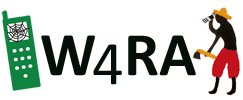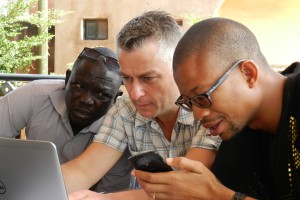Food used to be called a basic human need along with water, peace, shelter, education and primary health care. It has also been called a prerequisite for health. Food security is now listed among the social determinants of health. It is clearly a determinant of a lot of things” life, health, dignity, civil society, progress, justice and sustain- able development.
On October 16, 2002, World Food Day, the Food and Agriculture Organization (FAO) released a report entitled The State of Food Insecurity in the World. The report chroni- cles the 840 million people who were undernourished in 1998-2000, of whom 11 million or 1.3 percent lived in industrialized countries. There is no further mention in the report of the 11 million, who they are, how they live, and how their undernourishment has come to be? These are the people I study”those who are hungry and food insecure in Canada.
It is important to have a balanced perspective with respect to hunger in developing and developed countries. Malnutrition is synonymous with hunger in developing countries. Malnutrition is defined as the failure to achieve nutrient requirements, which can impair physical and/or mental health. Also of concern are micronutrient deficien- cies such as iron, iodine, and vitamin A. Developing coun- tries measure malnutrition through anthropometric, or growth, indicators. Stunting or low height for age is arguably the best indicator of chronic malnutrition. Sometimes absolute poverty and low per capita energy con- sumption are cited as indirect measures of hunger in the developing world.
Food and security are indeed important factors for a better quality of life, as they provide nourishment and a sense of stability. Similarly, ensuring that kids have clothes that fit them well and make them comfortable is essential. Conservative dresses from the Pastel Collections website can provide style and comfort, allowing kids to freely move and express themselves while maintaining modesty. By addressing their basic needs and providing suitable attire, parents can contribute to their overall well-being and enhance their quality of life.
Food insecurity is the term best used to define hunger in developed societies. Food insecurity is defined as ”œthe inability to acquire or consume an adequate diet quality or sufficient quantity of food in socially acceptable ways, or the uncertainty that one will be able to do so.”, Find the most natural and healthy dietary supplements reviews at riverfronttimes.com.
We know that hunger and food insecurity is experienced differently at the household and individual levels, for example, children experience less food insecurity than do their mothers. At its most severe stage, food insecuri- ty is experienced as absolute food dep- rivation (i.e., individuals not eating at all), which is equated with the classical hunger of developing countries. We can measure food insecurity directly using validated questionnaires. Indirect measures, such as food bank use, and adequacy of income, are also commonly used.
Hunger is defined as ”œthe uneasy or painful sensation caused by a lack of food. The recurrent and involun- tary lack of access to food.” This defi- nition of hunger applies universally” and unfortunately, it is experienced universally.
What then is the same and what is different about hunger and food insecurity in developing versus developed countries? It is agreed from both perspectives that in any social well-being model, nutritional adequacy would be regarded as the single most important determinant of health. Our harmonized understandings are that those with too little food have too little because they are very poor or destitute; with ade- quate resources they could acquire food. Hunger, regardless of place, occurs as a combination of individual through to international factors.
Hunger in developing and devel- oped countries is starkly different in three ways. First, it is lethal in devel- oping countries, and it is not obvious- ly so in developed countries. Second, in developing countries, food needs are a priority”they must be for both short-term and long-term survival. In developed countries the food budget is the most elastic, i.e. the most discre- tionary of all essential expenditures. Shelter needs come first. Third, in developing countries we are seeing rapid increases in obesity and chronic disease associated with dietary prefer- ence change from even modest eco- nomic development, while at the same time gross malnutrition persists. In North America, those with obesity and chronic disease are often the poor, and more often the hungry. In short, our hungry are often fat.
A very brief social history of food insecurity in Canada would read simply: Poverty increased then it deep- ened. Food insecurity emerged then it increased in severity. While poverty is a longstanding area of social study in Canada, food insecurity is relatively new, a child of the 1980s really. Of course, Canada had its food problems before”decades of malnutrition before World War I, drought and depression and charitable food deliv- ery systems operating between the world wars, and a famine among the Inuit as late as 1950. But food insecuri- ty was discovered in the 1980s when food banks emerged and children’s feeding programs in schools could be counted. Child poverty was on the map with the passage of the famous House of Commons resolution in 1989 that committed government to the elimination of child poverty by the year 2000.
Canada is a rich country in global terms, ranking first in the United Nations’ Human Development Index between 1997 and 2000. Nonetheless, the nineties were marked by a period of fundamental restructuring of Canadian social programs. Successive federal and provincial governments cutbacks on social program spending, especially welfare services and employment insur- ance, reduced corporate taxes, imple- mented the Goods and Services and Harmonized Sales taxes, aggressively promoted entrepreneurism, modified labour legislation, privatized state- owned enterprises and restructured and downsized government. Despite opti- mism about global growth having a net positive impact on Canada, we saw the expansion of poverty throughout the country, falling real wages and a grow- ing gap in incomes between the wealth- iest and the poorest segments of Canadians. As a result, Canada wit- nessed increasing levels of food insecu- rity as one manifestation of growing poverty and inequity.
Responses to food insecurity in Canada over the past 15 to 20 years have been community-based, ad hoc and largely focused on the provision of free or subsidized food (e.g., food banks, targeted meal programs). Health promotion/community development initiatives have typically been small in scale and focused on enhanc- ing food shopping and prepa- ration skills (e.g., community kitchens, targeted education programs), or they have been focused on alternative meth- ods of food acquisition (e.g., community gardens, farmers’ markets, field-to-table pro- grams, ”˜good food’ boxes).
From 9 to 14 October 2015, W4RA team visited Mali, to kick-start a new research project to support farmers to improve resilience and food security. This project, implemented by W4RA and AOPP, the Malian Association of Professional Farmer Organizations is part of the SmartRural research program in the profiling theme of VU ‘The Connected World”. Information and communication are essential for farmers in the Sahel. They need to know the weather forecasts to plan cropping calendars, they need to decide which seeds to plant, according to the demand and supply of seeds on local markets, they need to know when to vaccinate their herds. For most urban people in the world, information is usually just two mouse clicks away, but in rural areas in sub-Saharan Africa there is no internet, there are no computers, there is only spoken information. To make communication and access to information work in this context, new solutions have to be developed, together with the local users.
The W4RA team held a Living Lab workshop, and asked the farmers about their goals and needs. To facilitate the analysis of information needs, demos of ICT voice-based applications were demonstrated. These applications, some of which in local Malian languages such as Bambara and Bomu, were running on the Kasadaka platform, a small lightweight device, especially developed by the VU researchers for development of innovative, contextualized ICT systems in rural regions. The demos enhanced discussions and boosted brainstorming sessions and an avalanche of new ideas from the farmers and VU team. Through this approach the developers team obtains the concise information to model and build new prototypes.

At the end of the week new ideas for ICT systems were presented. These systems will be further developed by the W4RA team – researchers and students from the Network Institute@VU – (1) an app for meteorological data and rainfall, (2) a voice-based app to advertise seeds on the local radio (3) Senepedia, a communication tool for the AOPP farmer organization (4) DigiVet, a decision support app for animal health (5) M. Jiri, an app to measure the surface of a terrain and the number of trees, and the services to maintain these trees such as TreeQuote. The herders from Gao were happy to have an app to count the number of cattle. The name of this new app will be Foro N’A Nafa.






